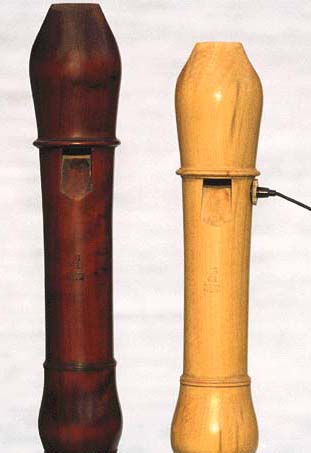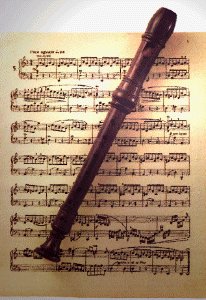 bear
it...
bear
it...
 solo and ensemble playing. It is simple enough in design--that
is, a whistle-like mouthpiece attached to a long tube full of holes which
must be covered and uncovered to produce differing tones. There are
seven holes plus one for the thumb. Recorders can be constructed
out of many types of wood (boxwood, rosewood, and maple
solo and ensemble playing. It is simple enough in design--that
is, a whistle-like mouthpiece attached to a long tube full of holes which
must be covered and uncovered to produce differing tones. There are
seven holes plus one for the thumb. Recorders can be constructed
out of many types of wood (boxwood, rosewood, and maple  are
the most common) or even ABS plastic. Debate rages over which type
is better.
are
the most common) or even ABS plastic. Debate rages over which type
is better.
The recorder is often used as a learning or teaching instrument in
classrooms, which is one of the reasons why I find it is so misunderstood
at times. When I tell anyone that I play the recorder, I usually
get, "Oh, you mean those things that we played in elementary school?" or
"Oh, yes, my son's class plays recorders also." I've learned just
to grin and  bear
it...
bear
it...
Not unlike other instruments, such as trombones, there are many different types of recorders, separated primarily by their range and size. Recorders are subdivided into nine different types. As a rule, the larger they get, the deeper voiced they get. Modern day Baroque recorders are fingered in one of two ways. These different fingerings are commonly referred to as simply "C" or "F" fingered. When all the holes of the recorder are covered, if the note which sounds is a concert C, the recorder is said to be C fingered. It is likewise with F. This is so that the ranges of the different types of recorders overlap in a neat and orderly fashion for ease of ensemble playing.
![]()